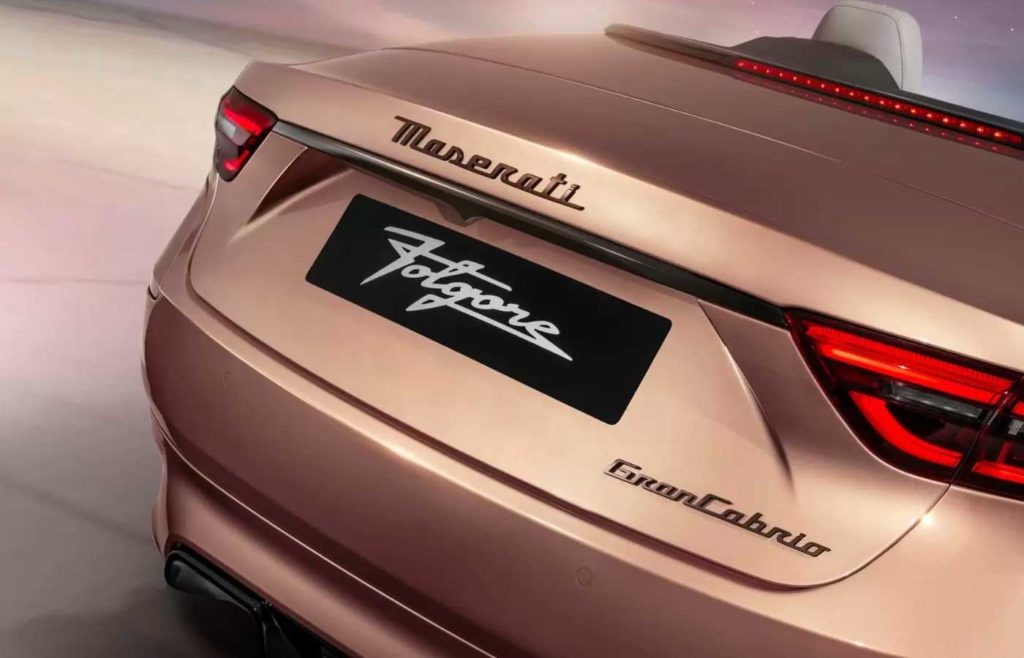
Since the creation of Stellantis, most of the group's brands have adopted an ambitious roadmap to become fully electric (following the Dare Forward 2030 plan). Among them is Maserati, the prestigious Italian brand renowned for its bewitching sounds. But Why is Stellantis banking on the 100 % electric for Maserati, and why is it a risky choice? Let's explore these questions in detail.
Stellantis' strategy: profit or die
Stellantis is aiming for a double-digit margin and substantial dividends for its shareholders. Each brand must demonstrate its ability to contribute to this objective by 2030.This implies a significant pooling of components, such as platforms (STLA Smart, Small, Medium, Large, Frame) and powertrains. While this mutualization strategy may suit several brands, it risks degrade the perceived value of a luxury brand like Maserati. For example, the STLA Large platform, originally designed for Maserati, is now available in a new version. now called into question. Carlos Tavers, CEO of Stellantis, warned. If a brand is not making money by 2030, it will be discontinued.
Powertrains, between technical choice and CAFE standard
In 2019, FCA has declared that it will stop buying Ferrari engines for its V6 and V8 models in 2021, maximum 2022. At present, Stellantis has at its disposal the Giulia V6, from which the Nettuno V6 derives, and the recent GME L6 aka Hurricane. However, neither of these vehicles is intended to be a plug-in hybrid (PHEV). According to our information, PHEV development for the GME L6 was halted in 2022.
The CAFE standard requires that 25 % of vehicles sold in 2025 must be electric, with average CO2 emissions of 81 g/km. A Grecale Trofeo emits 254 g/km of CO2 and a Levante Trofeo V8, 317 g/km. Even a Grecale 4-cylinder MHEV exceeds 200 g/km. With a penalty of €95 per gram of CO2 per car sold in excess of 81 g/km, Maserati is not the best performer among the group's brands, and has no interest in making too much volume. By way of comparison, an Alfa Romeo Junior hybrid emits between 110 and 120 g/km and a Ferrari 296 GTB PHEV around 150 g/km.
Lotus, Porsche, Ferrari, Lamborghini - what does the competition have to say?
Maserati's Folgore range offers undeniable sporting qualities (numerous tests indicate that the Grancabrio Folgore is remarkable), but it lacks a crucial element of the brand's DNA: sound. Luxury car customers are particularly fond of it.. In 2022, Ferrari declared that the long-term success of hybrid and electric technologies was uncertain: " In the long term, we believe that combustion engines will continue to be essential to the Ferrari driver experience." .
Lotus, a sports car brand that is becoming 100 % electric, now part of the Chinese Geely group (Volvo, Polestar, Lynk & Co...), is a good illustration of this uncertainty, with 6900 deliveries for a loss of 750 million euros in 2023. Despite 17,000 orders still to be fulfilled, Lotus loses another 258 million euros in the first quarter of 2024. The brand is aiming for 30,000 deliveries a year to reach profitability and 150,000 deliveries by 2028, with China as the main market.
Porsche, faced with slower-than-expected adoption of electric vehicles in Europe, has scaled back its electric car sales ambitions. It is maintaining a dual strategy, developing both internal combustion engine cars and electrified vehicles. Rimac's CEO, for his part, stressed that enthusiasm for electric hypercars waneswith buyers looking for analog sensations and combustion engines.
Aston Martin has postponed the launch of its first electric 100 % model until 2026. Ferrari plans a single electric model in 2025, and Lamborghini does not envisage an electric model before 2028. At the end of 2023, McLaren's CEO made it clear that the brand would not be entering the electric vehicle segment any time soon.
The 100 % electric bet: a calculated risk?
Is Maserati truly avant-garde in becoming an electric 100 % luxury brand, or is this a decision dictated by a lack of technical options and the need to comply with CAFE regulations as early as 2025? One thing is certain: the road to full electrification is fraught with pitfalls for Maserati, and Stellantis' gamble is far from a foregone conclusion. The next few years will be crucial in determining whether this strategic choice will bear fruit.
All-electric sports cars don't work. You have to use hybrid models, which is what Ferrari is doing.
It will be the same problem with future Alfa Romeo models.
I think it's vital for Maserati to have its own platform and specific technologies, just as it is for Alfa Romeo - that's what customers come for. This is in direct contradiction with the plan for excessive mutualization and the ROI requirements laid down by Administrateur Lambda. A passion for cars cannot go hand in hand with a passion for money, especially if you're more passionate about money. With this pause, we can assume that the Maserati team is resisting this trend towards standardization by retaining the Giorgio 1.5 platform and the driving experience that goes with it, which is all that matters when it comes to selling a luxury car. On the other hand, the Innovation Lab is in the process of being closed, so it's hard to see how new models could be developed (by totally outsourcing them to Dallara?). I can't see Maserati or Alfa Romeo disappearing, as they are much stronger brands than Stellantis in their sector (the automotive sector, not the financial sector). So eventually they will be sold, not "closed".
They're really trying to sabotage themselves, it's impossible.
I return to my comparison with watches. A digital watch, even one wrapped in the most precious materials and the finest leathers, will remain a vulgar digital watch and will never be able to compete with a fascinating and prestigious watch mechanism.
An interesting and rather fair comparison!
Agreed!!!